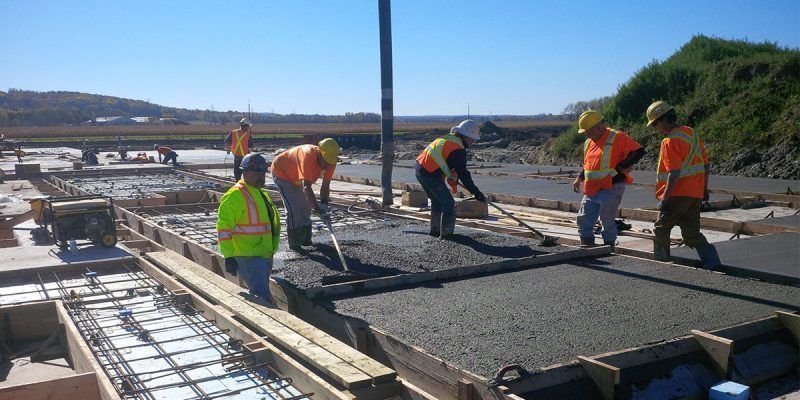‘Going green’ isn’t just the latest rage in how we manage our daily lives. It’s also front-and-centre in the construction processes and products involved in schools across Ontario.
Those who truly want to be environmentally friendly will build an off-grid cabin in the woods. But when it comes to school construction in Ontario, tilt-up construction is the method to create a more-sustainable and practical future for Ontario’s educational institutions.
Learning how to take better care of our environment and the materials at our disposal is important at every step of the construction process. So, how did tilt-up construction and the experts at Tilt Wall rethink how we respond to the growing need for highly effective learning centres?
School Wall Size Matters
Tilt-up construction involves casting large insulated concrete panels, and tilting them into place. Since each tilt-up wall panel is cast onsite, and can weigh over 150,000 pounds, there are far fewer joints for uncomfortable temperatures to find their way into a school building. Cutting the number of gaps, and tightly sealing the few remaining, creates a practically impenetrable shield from the outdoors.
Impervious Layer of Insulation
Between the dual layers of concrete, each panel has a layer of extruded polystyrene insulation (R-20). These continuous layers of insulation further help to regulate the inside temperatures and are only mildly affected by fluctuations in outside temperatures. Since the insulation is airtight between the concrete, it does not lose its R-value.
The ‘Green’ Side of Thermal Mass in Concrete
Concrete is composed most often of cement, water and aggregates, and can easily absorb and store energy over a long period of time. Interior concrete panels are six inches thick, while exterior is 3” thick, allowing the thermal mass properties to work more efficiently: heat can be slowly released in winter and cool air can be slowly released in summer.
Tilt-Up Construction Cuts Jobsite Waste
Although we live in a ‘throw away’ society, tilt-up construction is breaking the habit by transforming how contractors manage jobsites. Very little waste is created with formwork and concrete pouring, resulting in a smaller construction site footprint than schools that choose lumber, concrete blocks or bricks. A few key people require tilt-up experience, but local labour can often be used, resulting in less transportation costs. Materials too, including everything from concrete to lumber, are often sourced locally.
Improving Your School’s Energy Efficiency in One Bold Step
Tilt Wall is quickly building a reputation for its eco-friendly schools here in Ontario. Contact Tilt Wall at 519-602-2990 or email info@tiltwall.ca to learn how tilt-up construction can do all of the above, plus offer your structure LEED points. We can even provide you with an in-depth brochure on the benefits of tilt-up construction for your school to share with decision makers in your community – all you need to do is ask.

